Chickpea Butter Is The Savory, Protein-Rich Alternative To Nutty Spreads
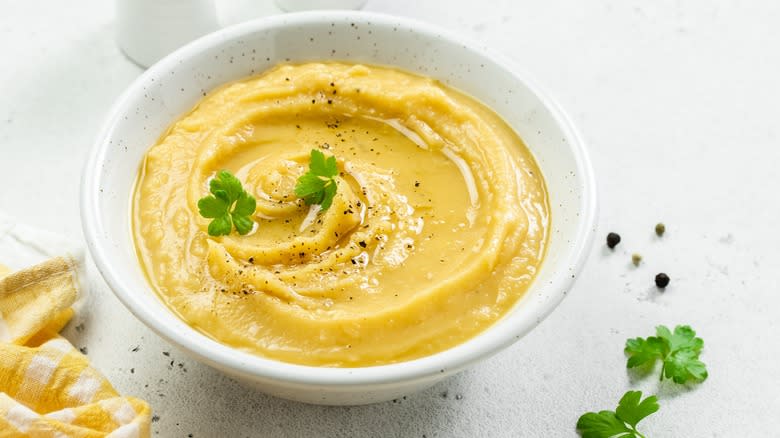
Chickpeas are incredibly versatile, nutritious, and delicious legumes. In recent years, it has become more and more common to find a wide variety of products that use chickpeas — whether that's chickpea pasta, chickpea flour, or the coveted aquafaba. And, of course, they are found in hummus and many other recipes. An up-and-coming condiment proves that's not all chickpeas can do, however. These days, chickpea butter has become a promising competitor to your usual nut-based snack and sandwich spreads.
With food allergies continually on the rise, people often seek out alternatives to products like peanut butter. Yet, popular substitutes such as almond butter fail to be adequate solutions, since almost 40% of those with peanut allergies choose to also refrain from eating tree nuts in order to exercise caution against potential cross contamination. Chickpea butter promises to fill this gap by offering similar flavor, texture, and nutrition to those who would prefer products made without nuts.
Read more: 30 Healthy Snack Ideas That Won't Ruin Your Diet
What Is Chickpea Butter?
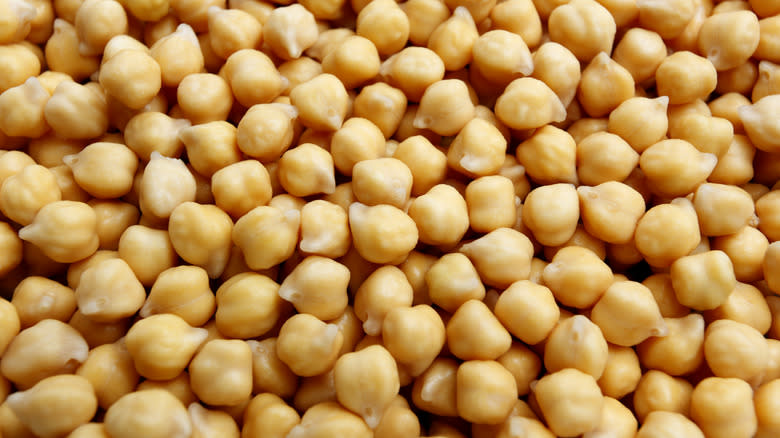
Chickpea butter is not the same as hummus. Where hummus is usually made with ingredients like garlic, lemon juice, tahini, and olive oil, chickpea butter is not. The spread is much thicker and contains sugar so that it leans sweet and can be primarily marketed as a replacement for peanut butter. Interest in this trendy butter has been gradually climbing upward since 2013, with several companies putting effort into creating their own version. And while it isn't commonly seen in grocery stores yet, it is readily available online. Chickpea butter evangelists tout it as a very successful peanut butter substitute, and claim it can be cooked with and enjoyed in exactly the same ways.
Some argue that chickpea butter is also better for the environment than other alternatives, like almond butter. This is because it takes about 501 gallons of water to grow a pound of chickpeas, whereas almonds require 902 gallons of water per pound. It's worth noting, however, that another common peanut butter alternative, cashew butter, only requires 180 gallons of water per pound. As such, the more significant benefits of chickpea butter lie in its flavor, nutrition, and nut-free status.
What Does Chickpea Butter Taste Like?
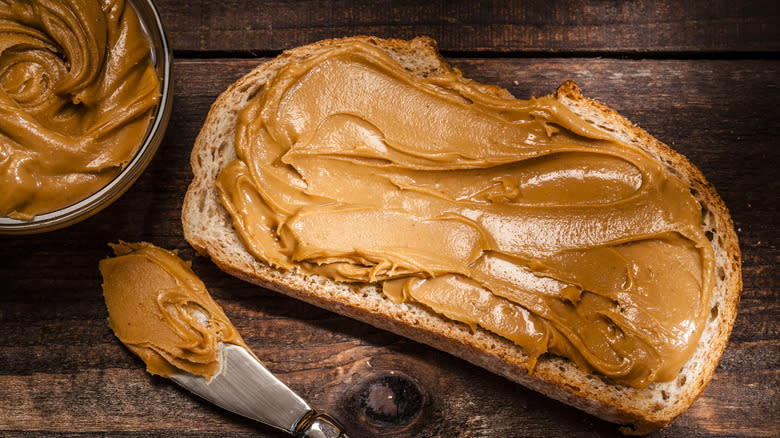
As a peanut butter mimic, chickpea butter has a flavor profile that is slightly sweet and a little bit salty, with a characteristic toasty, earthy flavor that is quite similar to nuts. It may not surprise you to hear that it doesn't taste entirely identical to peanut butter, though. Some versions of chickpea butter have been reported to have a delectably savory and vegetal undertone, which you may or may not find to be enjoyable.
When it comes to texture, chickpea butter is creamy, sticky, and spreadable. At room temperature it tends to be a bit runnier than traditional nut butters, leaning closer in consistency to something like tahini or ganache, but it thickens up significantly when stored in the refrigerator. Much like its competitors, it comes in both a smooth and crunchy variety, so everyone can find a version that is right for them.
How Is Chickpea Butter Made?
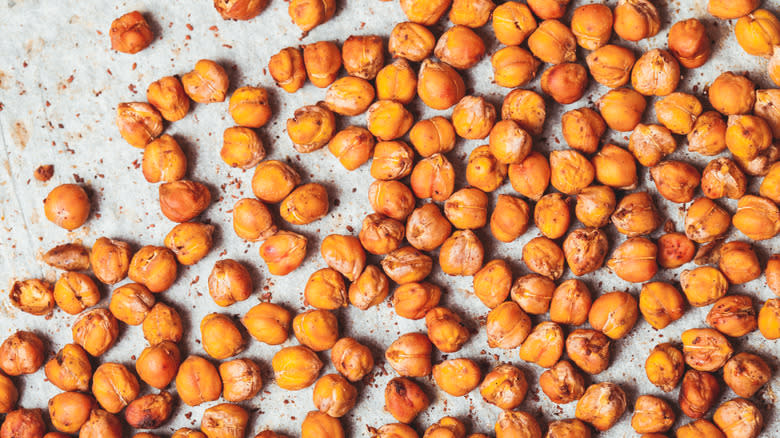
The process of making chickpea butter begins by drying and roasting whole chickpeas in order to give them the desired toasty flavor. If you're making it yourself at home, you can achieve this by placing your chickpeas in an oven at 400 degrees Fahrenheit for about half an hour, as in our recipe for easy roasted chickpeas. The legumes are then combined with oil, sugar, and salt, and blended to the desired buttery consistency. Feel free to leave in some chunks if you prefer the crunchy variety.
Past this point, recipes vary depending on the preferences of whoever is making it. Some brands of chickpea butter choose to incorporate a small amount of sunflower seeds into their recipe in order to help impart a nuttier flavor to the butter. Some people also enjoy adding sweeteners like honey or spices like cinnamon to further enhance the flavor.
Chickpea Butter Nutrition

Chickpeas in general are quite a nutrient-dense food. They are rich in fiber and are an excellent source of plant-based protein — just 1 cup of the legumes has 12.5 grams of fiber and 14.5 grams of protein. Chickpeas also contain 14% of the daily suggested amount of folate, a vitamin that is necessary for many vital bodily functions, such as converting carbohydrates into energy.
When compared to peanut butter, chickpea butter offers two times as many carbohydrates per serving, and a roughly equivalent amount of fiber and calories. It also contains a considerably lower amount of fat and half the amount of protein. Sugar content will vary by recipe depending on the presence of added sweeteners. Based on this information, it's clear that chickpea butter is not a one-to-one equivalent with nut butter, and can have nutritional benefits and drawbacks depending on each individual's preferences, dietary restrictions, and lifestyle.
How To Use Chickpea Butter
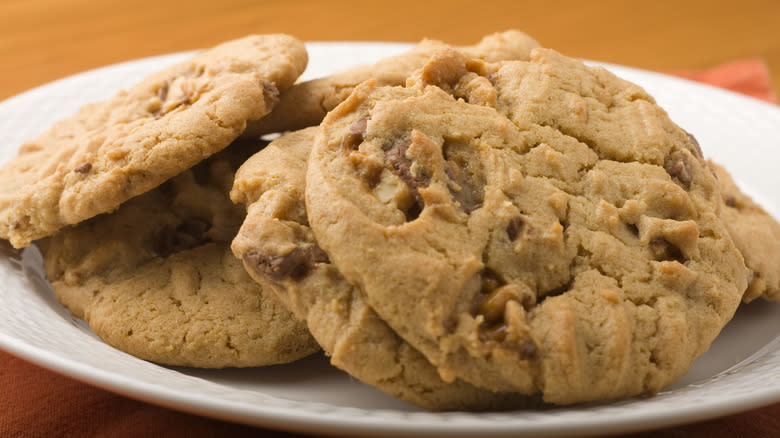
Chickpea butter can be used as a replacement for nut butter in pretty much any capacity. Its most common uses are as a spread for items like sandwiches, toast, and fruit. Its more liquidy consistency makes it perfect for drizzling on top of pancakes and waffles, or even ice cream. With the right seasonings, you could give chickpea butter a savory twist by using it as the base for a peanut-free sauce to top noodles or potstickers.
The legume spread can also be used as an ingredient for baked goods. Try baking it into cookies for a rich and buttery flavor, swirling it into brownie batter for a sweet-and-salty twist, or using it to create a molten core for cupcakes. Chickpea butter can also be an allergy-friendly addition to a hearty milkshake or energizing, protein-packed smoothie. Once again, savory applications are also possible, such as trying it in this spicy coconut peanut soup.
Read the original article on Tasting Table.

